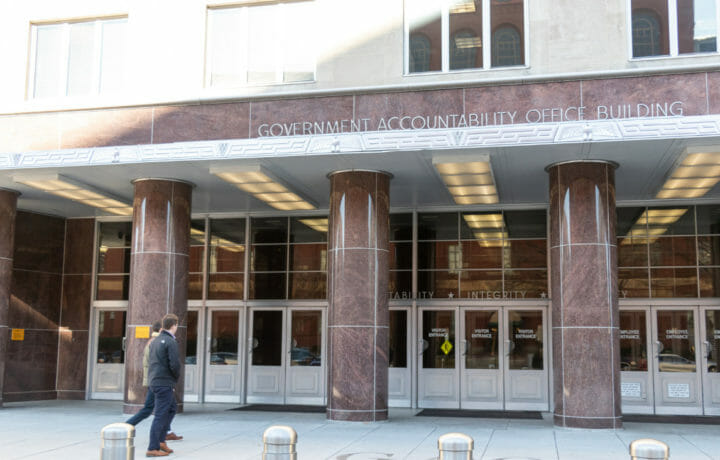A sage piece of advice is to “always use the appropriate tool for the task at hand.” This is true regardless of the size of the project, but it shouldn’t mean sticking with outdated tools or methods. This month, a government watchdog has warned that the United States Navy has essentially failed to heed this wisdom, at least in terms of using the latest and most modern tools. The sea service has for far too long failed to embrace the latest design practices that could reduce the construction of its vessels.
This is notable as the U.S. Navy is struggling to see its next generation of surface combatants and submarines built on time and on budget. Many of the service’s major programs are now years behind.
According to the Government Accountability Office’s (GAO’s) new report – “Navy Shipbuilding: Increased Use of Leading Design Practices Could Improve Timeliness of Deliveries” – delays and changes in the ship design are a major part of the problem.
This is compounded by the U.S. Navy’s failure to embrace the types of digital-design tools that revolutionized the process of building commercial vessels and even military aircraft. While 3D modeling and digital twinning have aided the United States Air Force to fast-track the design, prototyping, and even experimentation of new platforms – such as the Northrop Grumman B-21 Raider stealth bomber – the U.S. Navy has failed to employ such technology
“Navy shipbuilders’ use of these tools remains more limited overall than what we found for commercial builders,” the GAO wrote.
Learning From Commercial Ship Design
As reported by the shipbuilding trade magazine The Maritime Executive, the U.S. Navy could also look to how complex and expensive commercial vessels – notably increasingly massive cruise ships – go from the detail design to first-in-class delivery on a timeline that is up to faster than U.S. Navy surface combatants.
Though the sea service has a long requirements process that can drag out the timeline, even before the start of detail design, this process could be better managed. One factor is that cost and schedule estimates are all too often prepared before the design is stable – which results in changes and budget uncertainty. That is further slowed by lengthy vendor selection for a ship’s systems, and further delays the completion of detail design.
The GAO found that the U.S. Navy often lacks structured design timelines and milestones for design maturity that commercial owners use to make shipbuilding choices. The lack of a time-limited process for decisions, and a lack of capable in-house design capabilities results in further delays. The GAO has called for the U.S. Navy to adopt modern computer-aided design tools and recommended that Congress require that all essential design work be completed with 3D modeling before any work begins on construction. The requirement would also include finishing the design of all major distributive systems before laying the keel.
The watchdog also recommended that the Secretary of the Navy should ensure that the design teams for new ship designs include user representation, and that could include current or recent operators and engineers from the U.S. Navy’s fleet, to provide consistent, direct user input in the design review process and inform decision-making. In addition, GAO called for the Navy to develop a robust digital ship design library to enhance its ability to leverage existing designs and expedite design and construction.
The U.S. Navy has already agreed with many of the recommendations, while GAO is pushing for all of its recommendations to be fully implemented.
Addressing Shortages in Shipbuilders
Even if the U.S. Navy does implement all of the recommendations, it likely still faces rough seas ahead. Beyond streamlining the design process, Washington still lacks the shipyards to build and maintain a sizeable U.S. Navy fleet, while there remains a shortage of shipbuilders. Since the pandemic, shipyards have seen high retirement rates for older and more skilled workers, and there simply aren’t new hires to replace those leaving the workforce.
Moreover, the service has struggled to meet its recruiting goals. The U.S. Navy had a 2023 enlistment goal of 37,700, yet, it brought in just 31,834 – while for 2024, the U.S. Navy had raised the bar to 40,600, as it is set to reach a total strength of 337,800.
That problem has gotten so dire that in January, the sea service announced earlier this year that it would enlist individuals who didn’t graduate from high school or even obtain a GED (General Educational Development) certificate.
That latter issue was so great that the U.S. Navy’s top civilian official issued a National Call to Maritime Service during the kick-off of the inaugural Fleet Week Miami on Monday.
“Service in the Navy and Marine Corps is more than just a job. It represents a chance to serve something bigger than yourself,” said Secretary of the Navy Carols Del Toro. “We recognize the desire of Americans from all walks of life to use their talents to better our great Nation, to be part of a legacy of courage and honor that stretches back to the very founding of our nation—and beyond.”
The U.S. Navy is currently the smallest in size that it has been since the First World War. It will need to revolutionize how it designs and builds the fleet of tomorrow, and figure out how to recruit the sailors to crew them.




